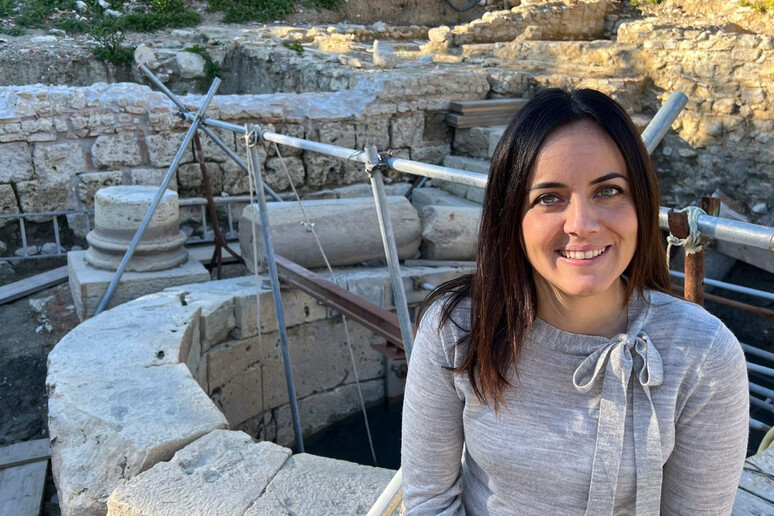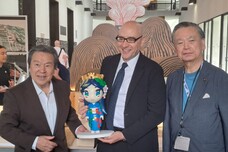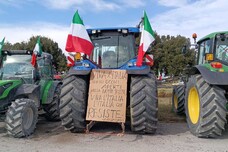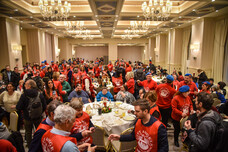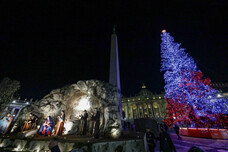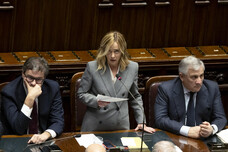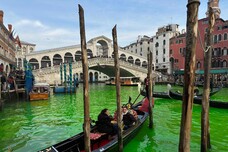(By Silvia Lambertucci) (By Silvia Lambertucci) "What can I tell you, for us here at San Casciano the amazing discovery that has come from the archaeological excavations at the Great Bath is a dream come true".
In her leather jacket and boots, Mayor Agnese Carletti has a
confident stride as she moves between the mud and the stones of
the excavation site which has been bringing to light the remains
of sacred Etruscan and Roman baths for the last three years in
the countryside outside this Tuscan village.
Mayor Carletti is
talking about young people and she knows what she is talking
about: she too, just 37 years old, has been running her town's
administration for the last eight years, with a degree in
philosophy and an infectious passion for challenges, has ahead
of her a future that is all there to be built.
And it is a future in which the discovery of these pages of
history from 2300 years ago has a markedly important weight.
Because this town has invested a lot on the wager of
rediscovering the oldest baths - a town which still today relies
a lot on spa tourism, so much so that it restored the baths that
the Medicis frequented in the 1500s. And behind what today
appears a challenge that has been overcome, there is also a
story of women, of solidarity between the generations and a
provincial community that is struggling but will not give up.
With no more than 80 residents in its magnificent historic
centre, and in all 1,550 souls scattered around the countryside
of its three districts, San Casciano dei Bagni, says the first
citizen who was elected for the centre-left Democratic Party
(PD), is a small town with all the problems that are common to
deept Italy: a distant hospital, a shortage of services, poorly
repaired and inadequate roads, and depopulation.
There are olives and wine, of course. But the main economical
force here is tourism, which guarantees around 60,000 people a
year with a season that is made longer by the presence of the
spa waters. An asset that is not enough, because more and more
shops have been closing with each passing year, only two
restaurants have remained open, and even the bar is shuttered
up.
"But we haven't given up," smiles the mayor as she introduces
her vice-mayor Fabiola Ambrogi, who has in the past served as
head of the town's administration too. And then there is Irene
Picchieri, who leads the archaeological group, Ada Salvi who is
head of the superintendency, and Federica Damiani who works in
Milan but dreams of returning here. Federica is also the soul of
La Terrazza, a festival which since 2016, every summer, has
brought politicians, intellectuals, actors and scientists to San
Casciano's main square.
They started by enlisting VIP visitors, the many who have second
homes in these dreamy hills, from actor Sergio Castellitto and
his wife the novelist and screenwriter Margaret Mazzantini, to
former PD chief and ex Rome mayor Walter Veltroni, also a noted
film critic.
Then, by word of mouth, many more came, from ex-premier and
former European Commission chief Romano Prodi to virologist and
political commentator Ilaria Capua, from actor Isabella Ferrari
to starchitect Massimiliano Fuksass.
"We did this to stimulate our young people," the mayor stresses.
The challenge of the archaeological excavations started even
before, in 2007, when the Etruscan necropolis of Balena was
excavated. The search for the ancient baths began in 2016, and
in 2019 came the excavation, which the town council generously
financed.
Ever since there has been a succession of surprises, up to the
most amazing of them all, in these very days, with the discovery
of 24 bronze Roman statues.
It is a huge satisfaction, even though there is something that
perhaps counts even more for San Casciano and that is the
valorization agreement that has been signed with the Ministry of
Culture and the University for Foreigners of Siena, to give
birth here to a museum, archaeological park and international
university research school. It is in fact a wager on the future
of this small community which is already dreaming of seeing the
streets of its borgo teeming with young people, as it was last
summer with the students from the University for Foreigners of
Siena sent in to give the archaeologists a hand.
Agnese looks around her, while below her, on the bottom of the
Roman pool, the dewatering pump has started up again to enable
the archaeologists to excavate and free the last finds from the
mud.
The long summer is really over, it's windy and it's starting to
get cold. Encased in her leather jacket, the mayor looks far
off, sighs, and smiles again. Then she rediscovers her fighting
talk: "This accord is for us a hope of succeeding in keeping our
young people here, to persuade those who have given up to think
again".
In short, the biggest challenge is just beginning.
ALL RIGHTS RESERVED © Copyright ANSA
